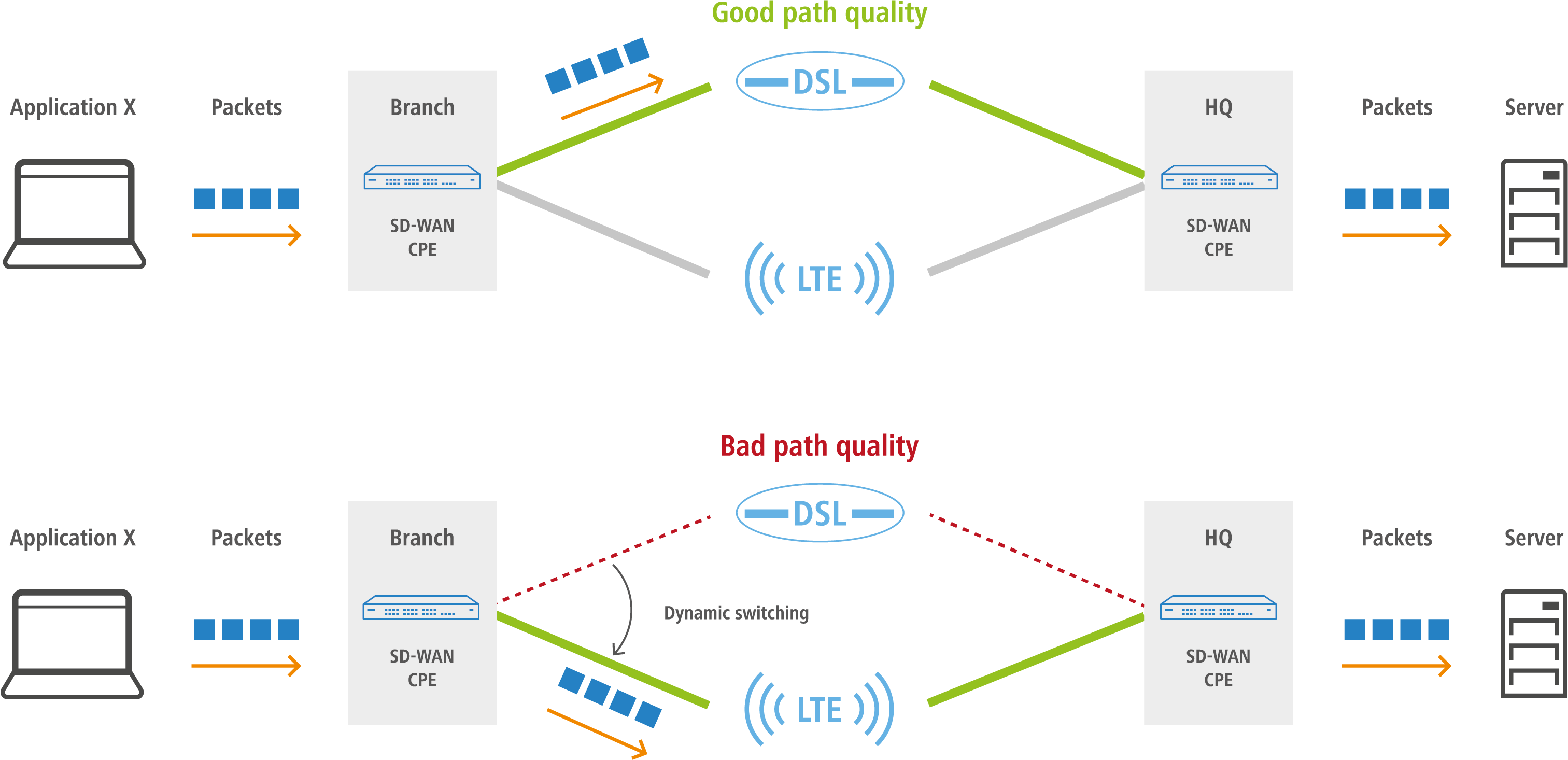Used in an SD-WAN scenario where several lines are available, Dynamic Path Selection (DPS) optimizes the performance of an application by directing data traffic over the line with the best quality as rated by metrics such as load, packet loss, latency or jitter.
In SD-WAN scenarios, MPLS lines should either be replaced or supplemented by cost-effective Internet connections such as DSL, cable Internet, fiber optic or 4G/5G. Load balancing helps to make use of the total bandwidth of all of the available lines. Dynamic Path Selection can be used to assure the performance of mission-critical applications. All lines are continuously, actively monitored with ICMP packets to calculate metrics for load, packet loss, latency and jitter. Policies are used to define the requirements of business applications: For example, the real-time data traffic on lines can be monitored for the allowed packet loss or the maximum latency of a possible path. The dynamic path selection algorithm selects the best quality line for sessions. If several lines meet the requirements, load balancing distributes the load across these lines by means of round-robin scheduling.

Dynamic path selection is activated on a load balancer. A load balancer can be defined either for Internet connections or for SD-WAN overlay tunnels (VPN). The end point for ICMP test packets can either be any IP address or the central-site SD-WAN gateway.
In the firewall, the defined (load balancer) policies for the applications are used in corresponding firewall rules. There, the traffic or applications to which the load balancer policy is to apply are defined.
